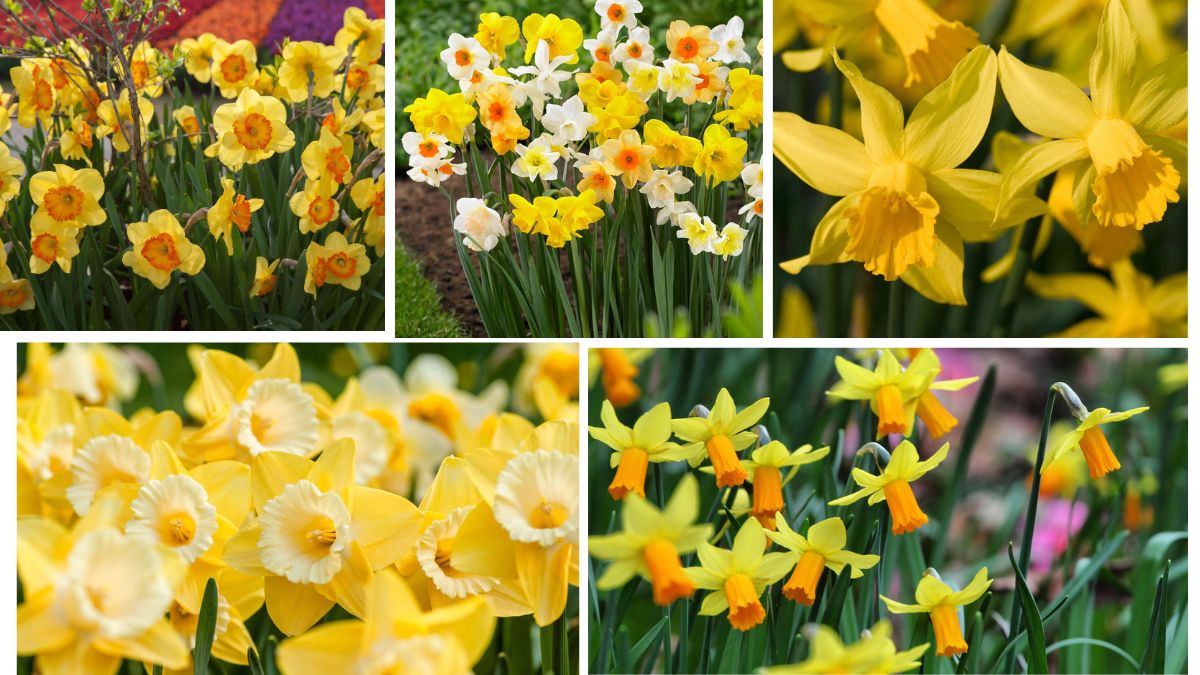Daffodils—those golden heralds of spring—are among the most cherished flowers in gardens worldwide. Their trumpet-shaped blooms and glowing yellow hues symbolize rebirth, hope, and happiness. Whether lining a walkway, popping up in drifts across a meadow, or brightening pots on a windowsill, daffodils bring a golden glow that’s hard to miss.
In this detailed article titled “Golden Glow: Tips for Growing Daffodils,” we’ll walk you through every step of growing these cheerful blooms—from selecting the right bulbs and planting them properly to seasonal care, pest management, and creative display ideas. Let’s unlock the secrets to growing daffodils that shine bright year after year.
Introduction: The Beauty and Symbolism of Daffodils
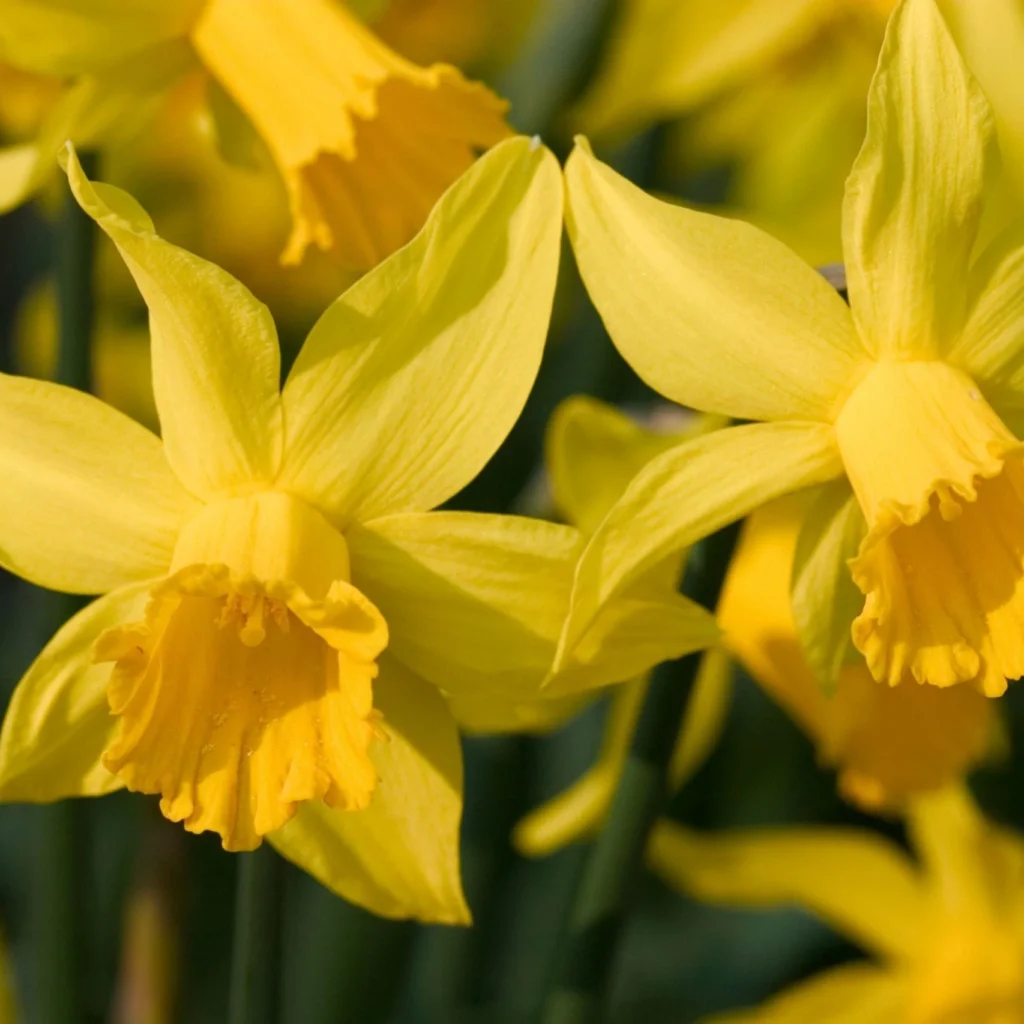
Scientifically known as Narcissus, daffodils belong to a genus of spring-blooming perennials native to Europe and North Africa. Their name comes from Greek mythology, where Narcissus fell in love with his reflection—hence the flower’s association with self-love and rebirth.
Daffodils are admired not just for their sunny colors, but also for their low-maintenance nature, deer resistance, and ability to naturalize (spread and return every spring). With proper care, they can brighten your garden for decades.
1. Choosing the Right Location: Light & Soil Requirements
Daffodils thrive best when planted in sunny spots with well-drained soil.
Tips:
- Sunlight: Plant in areas that get at least 6 hours of sunlight daily. While they tolerate partial shade, full sun encourages stronger, more vibrant blooms.
- Soil: Daffodils prefer slightly acidic to neutral soil (pH 6.0–7.0). Sandy or loamy soil that drains well is ideal.
- Drainage: Avoid soggy ground. Poor drainage causes bulbs to rot. If necessary, plant in raised beds or amend soil with sand or compost.
Why it matters: The right light and soil conditions promote healthy root development and abundant flowering.
2. Selecting the Best Daffodil Bulbs
Healthy bulbs are essential to a strong start.
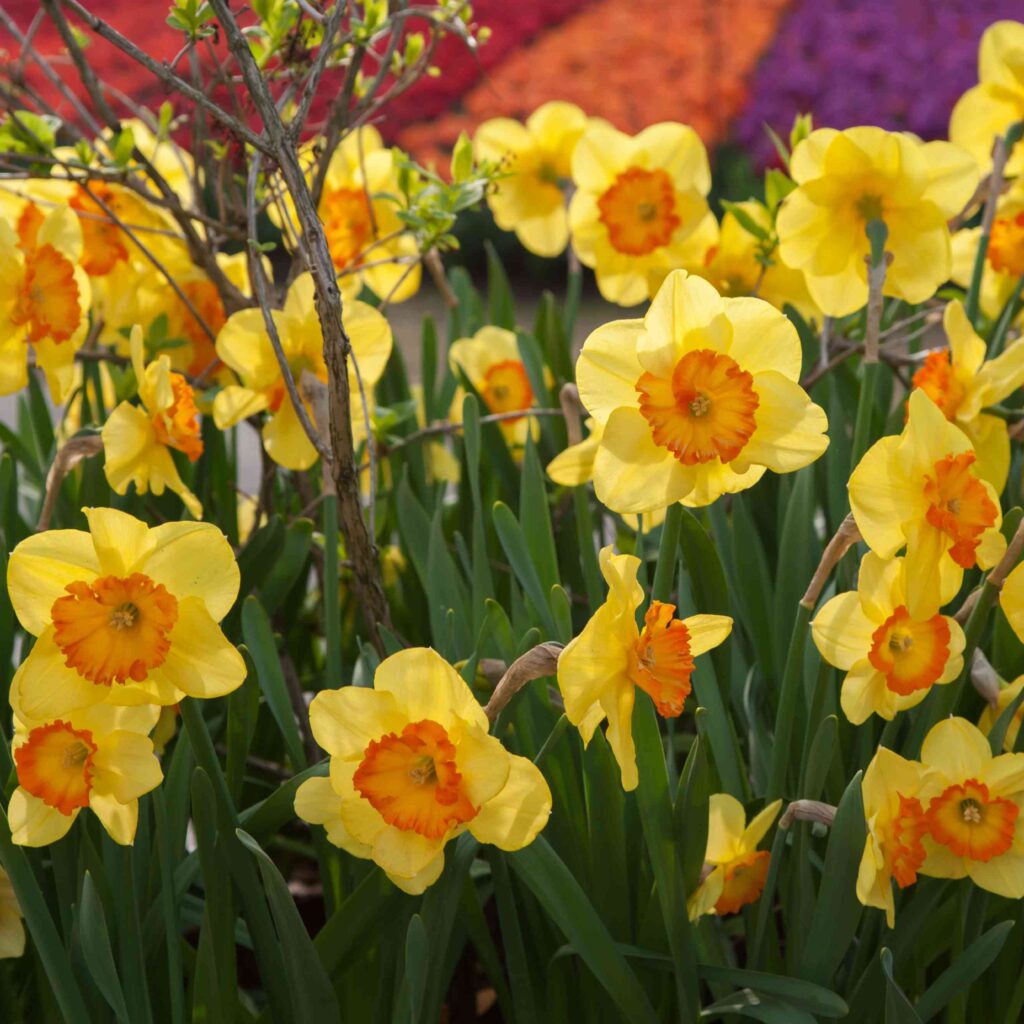
Bulb Selection Tips:
- Size matters: Choose large, firm bulbs—larger bulbs usually produce more vigorous plants and bigger flowers.
- Check for rot: Avoid bulbs that are soft, moldy, or shriveled.
- Buy early: Purchase bulbs in late summer or early fall for the best selection.
Popular Varieties:
- Trumpet Daffodils: Classic large yellow blooms.
- Double Daffodils: Ruffled centers for extra drama.
- Miniature Daffodils: Great for borders and containers.
- Bicolor Daffodils: Combine white and yellow or pink and cream.
Choose a mix for a staggered bloom time and a more dynamic display.
3. Planting Daffodils: Timing, Depth, and Spacing
Best time to plant: Fall—about 2 to 4 weeks before the ground freezes.
Planting Guidelines:
- Depth: Plant bulbs about 6 inches deep (or 3 times the bulb’s height).
- Spacing: Keep bulbs 4–6 inches apart for best airflow and bloom impact.
- Orientation: Pointed end up, root plate down.
- Water after planting: Light watering helps settle the soil and activate root growth.
Bonus Tip: Add a bulb fertilizer or bone meal during planting for an early nutrient boost.
4. Watering and Feeding: Simple But Strategic
Daffodils are drought-tolerant, but watering at the right time supports strong growth.
Watering Tips:
- Fall: Water after planting, then only if the season is dry.
- Spring: Once leaves appear, water deeply once per week if rainfall is scarce.
- After flowering: Continue watering for 3–4 weeks while the foliage feeds the bulb.
Fertilizer Tips:
- Use a low-nitrogen fertilizer (e.g., 5-10-10) when shoots emerge in early spring.
- Reapply after blooming to help the bulbs store energy for the next year.
Warning: Too much nitrogen = lush leaves but few flowers. Use a balanced or phosphorus-rich fertilizer for better bloom performance.
5. Post-Bloom Care: Preserving Next Year’s Blooms
Daffodils are perennials, meaning they return each year—if you care for them properly after blooming.
After Blooming:
- Deadhead: Remove spent flowers by cutting the stem. This prevents seed formation, which wastes energy.
- Leave the Leaves: Do not cut the foliage until it turns yellow and withers—this takes 6–8 weeks. The leaves photosynthesize and replenish the bulb.
- Mulch Lightly: In colder regions, apply mulch to protect bulbs over winter.
Optional: Divide clumps every 3–5 years if blooms become sparse. Dig them up after foliage dies back, separate, and replant in fall.
6. Pests and Problems: How to Protect Your Golden Beauties
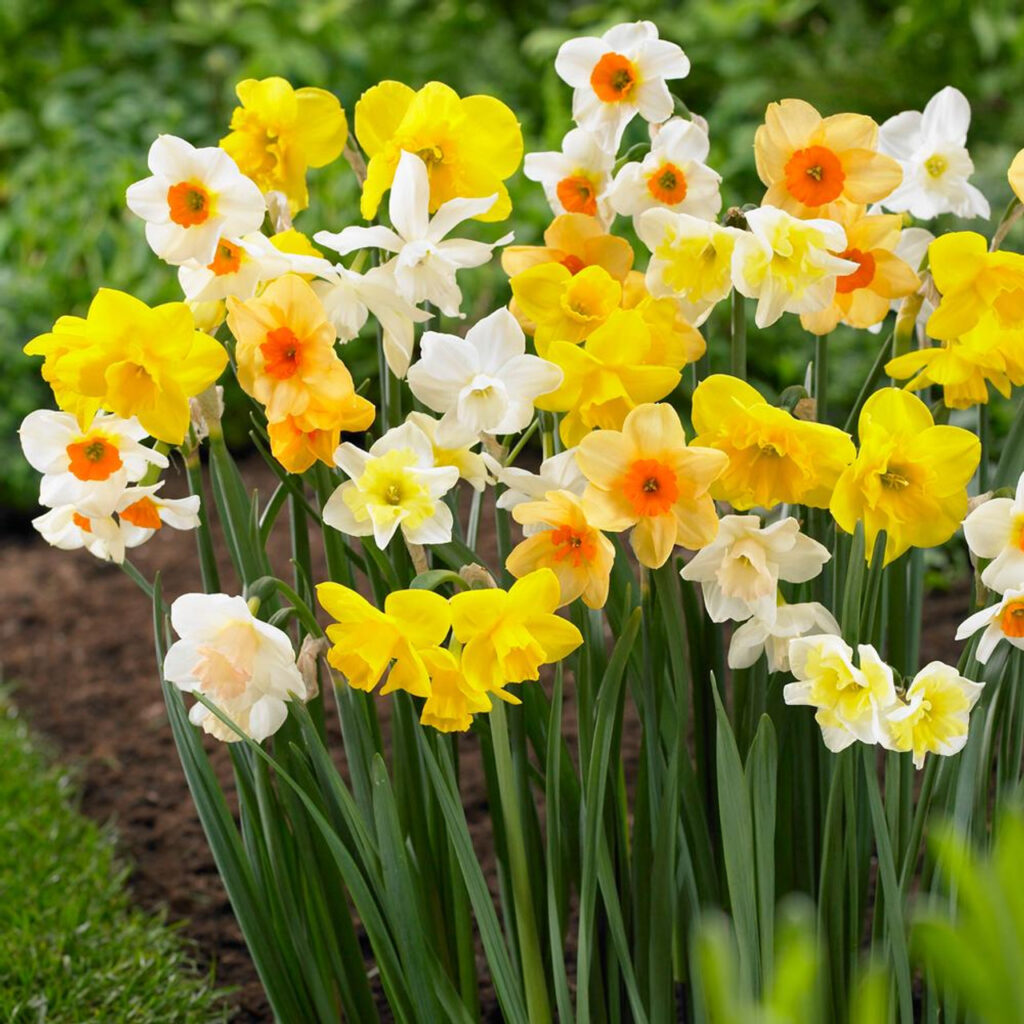
Daffodils are relatively pest-free, but it’s wise to stay vigilant.
Common Pests:
- Narcissus bulb fly: Larvae feed on bulbs, causing rot.
- Slugs and snails: May chew emerging shoots.
- Squirrels: Sometimes dig up bulbs.
Disease Issues:
- Basal rot: Fungal disease in waterlogged soil.
- Leaf scorch or bulb soft rot: Often due to poor air circulation or overwatering.
Preventive Measures:
- Plant in well-drained soil.
- Avoid overhead watering.
- Use pest deterrents (like crushed eggshells or cayenne powder).
- Inspect bulbs before planting and discard any damaged ones.
7. Growing Daffodils in Pots and Containers
No garden space? No problem. Daffodils grow beautifully in containers.
Container Growing Tips:
- Choose a deep pot (at least 10–12 inches) with drainage holes.
- Use well-draining potting mix.
- Plant as you would in the ground, grouping bulbs closely.
- Keep containers in a cool, sheltered spot outdoors through winter.
- Once growth appears in spring, move to a sunny location.
Watering: Keep soil lightly moist but never soggy.
Container daffodils make ideal porch or windowsill decorations and can be moved indoors during bloom time for cheerful, fragrant centerpieces.
8. Landscaping Ideas: Designing with Daffodils
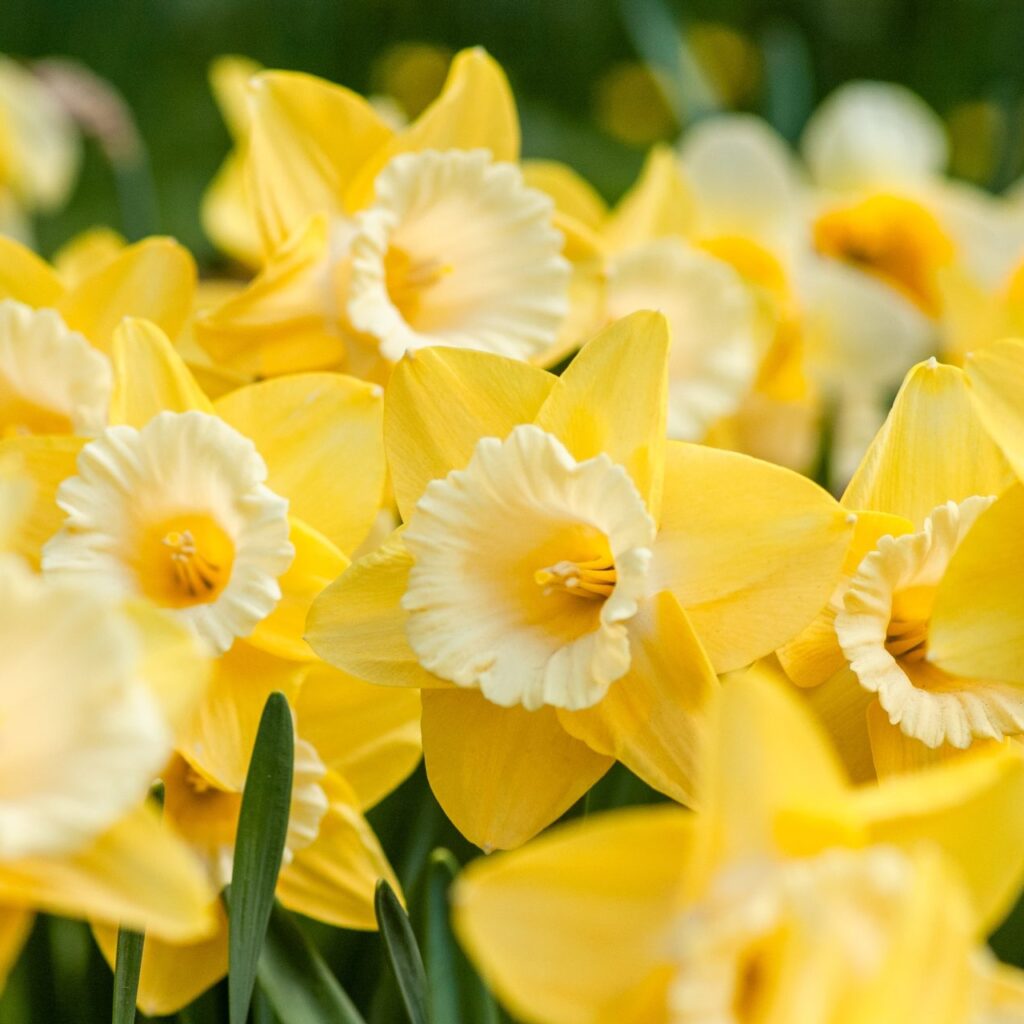
Daffodils are incredibly versatile for garden design.
Creative Uses:
- Mass Planting: Create bold swathes of color in beds or naturalized lawns.
- Borders and Pathways: Line walkways with miniature or mid-height varieties.
- Companion Planting: Pair with early spring flowers like crocus, tulips, hyacinths, or pansies.
- Under Trees: Plant daffodils beneath deciduous trees—they bloom before leaves block sunlight.
Pro Design Tip: Plant in odd-numbered groups for a more natural, less rigid look.
9. Daffodil Symbolism and Cultural Value
Daffodils are not just beautiful—they carry meaning.
Cultural Associations:
- Symbol of hope and renewal.
- National flower of Wales.
- Common flower in cancer awareness campaigns due to their uplifting spirit.
In Folklore: Daffodils are believed to bring good fortune when seen blooming in clusters.
Use in Gifts: A bouquet of daffodils conveys positivity, cheerfulness, and the arrival of brighter days.
Conclusion: Light Up Spring with a Golden Glow
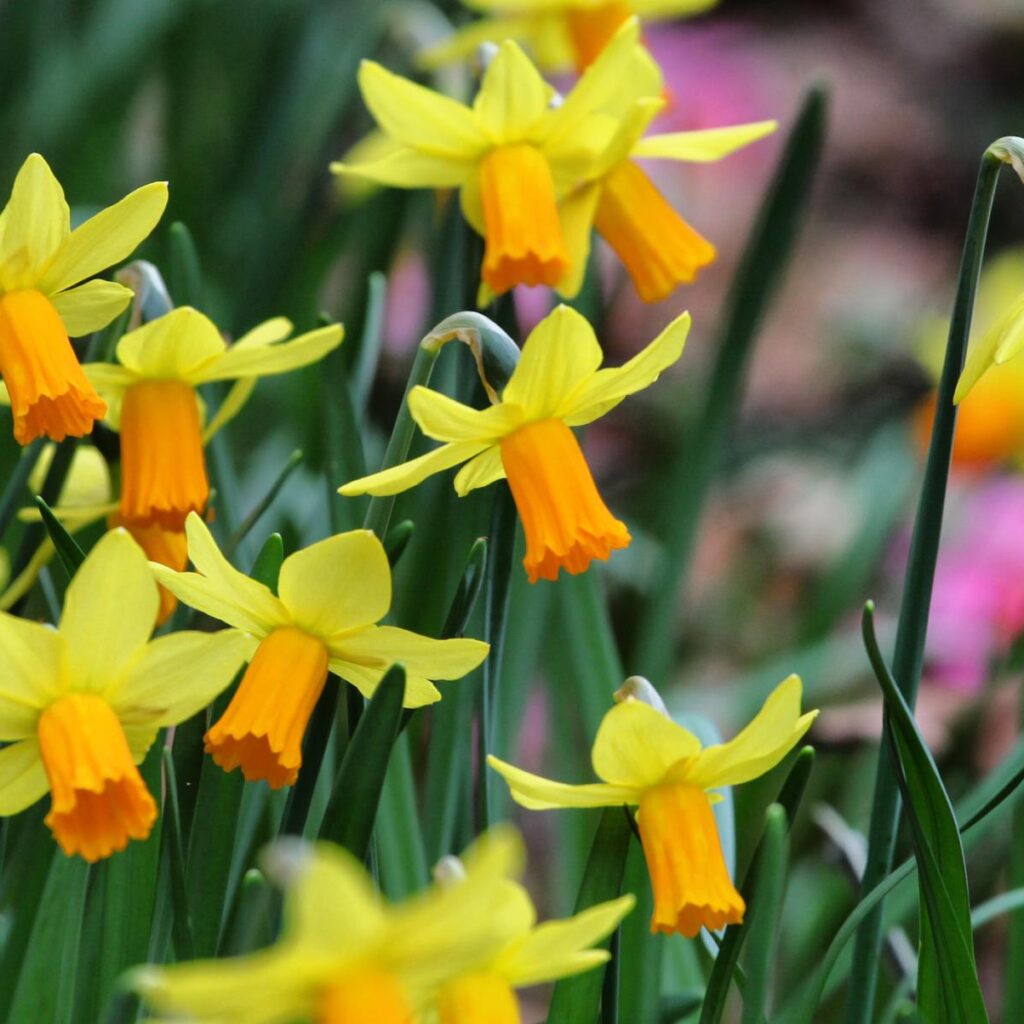
Growing daffodils is one of the most rewarding gardening experiences. These golden wonders are easy to care for, resilient, and generous with their blooms. With proper planting, thoughtful care, and a bit of patience, you can enjoy a breathtaking display of spring color year after year.
Whether you’re planning a sprawling garden bed, a charming container display, or naturalizing a woodland edge, daffodils add a magical golden glow that uplifts any space. Let these springtime jewels light up your garden—and your heart—with their simple beauty and radiant charm.
Final Tip: Extend your daffodil season by planting early-, mid-, and late-blooming varieties together. That way, your garden glows with gold for up to six weeks!
This guide offers all you need to bring the magic of daffodils into your garden and enjoy their sunny splendor each spring. Let your green thumb shine and grow your own golden glow.
